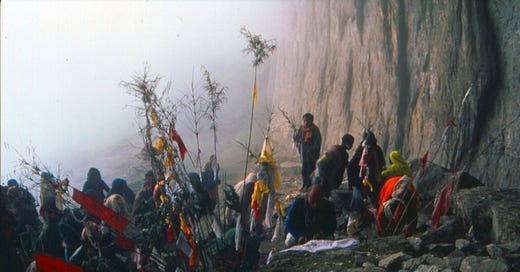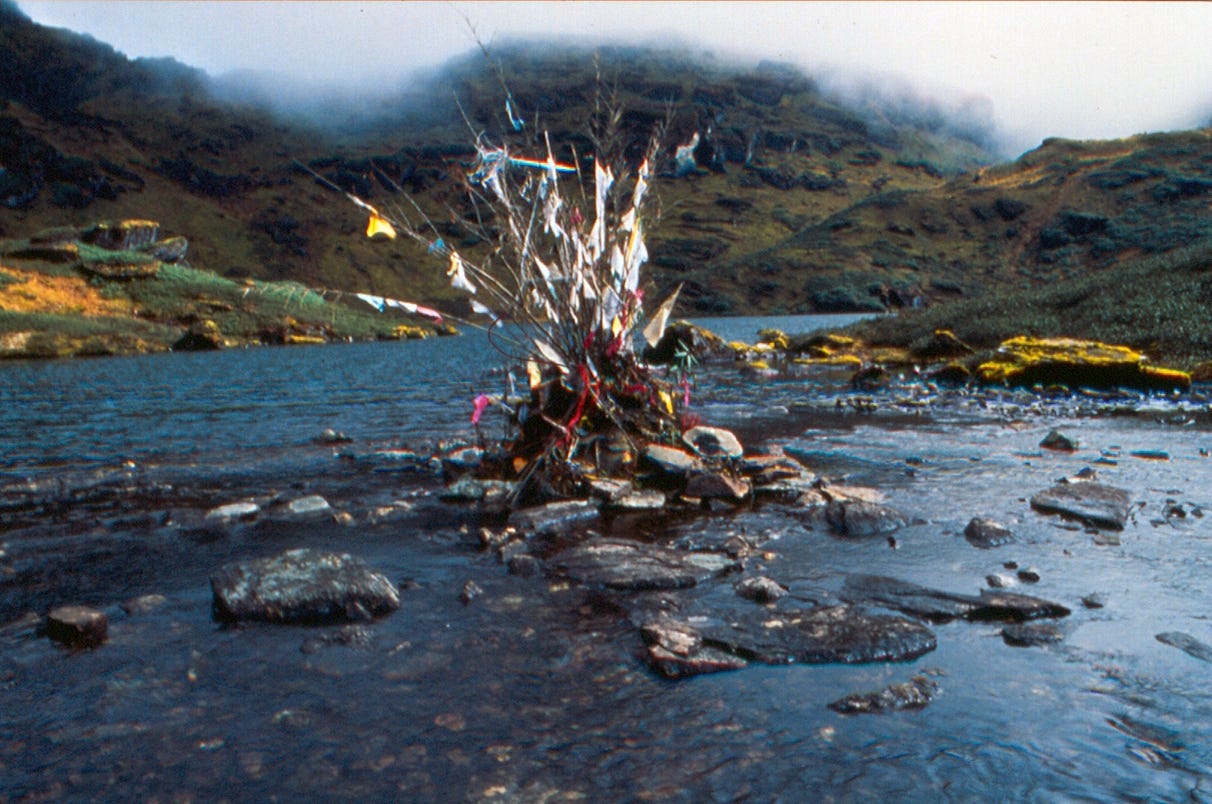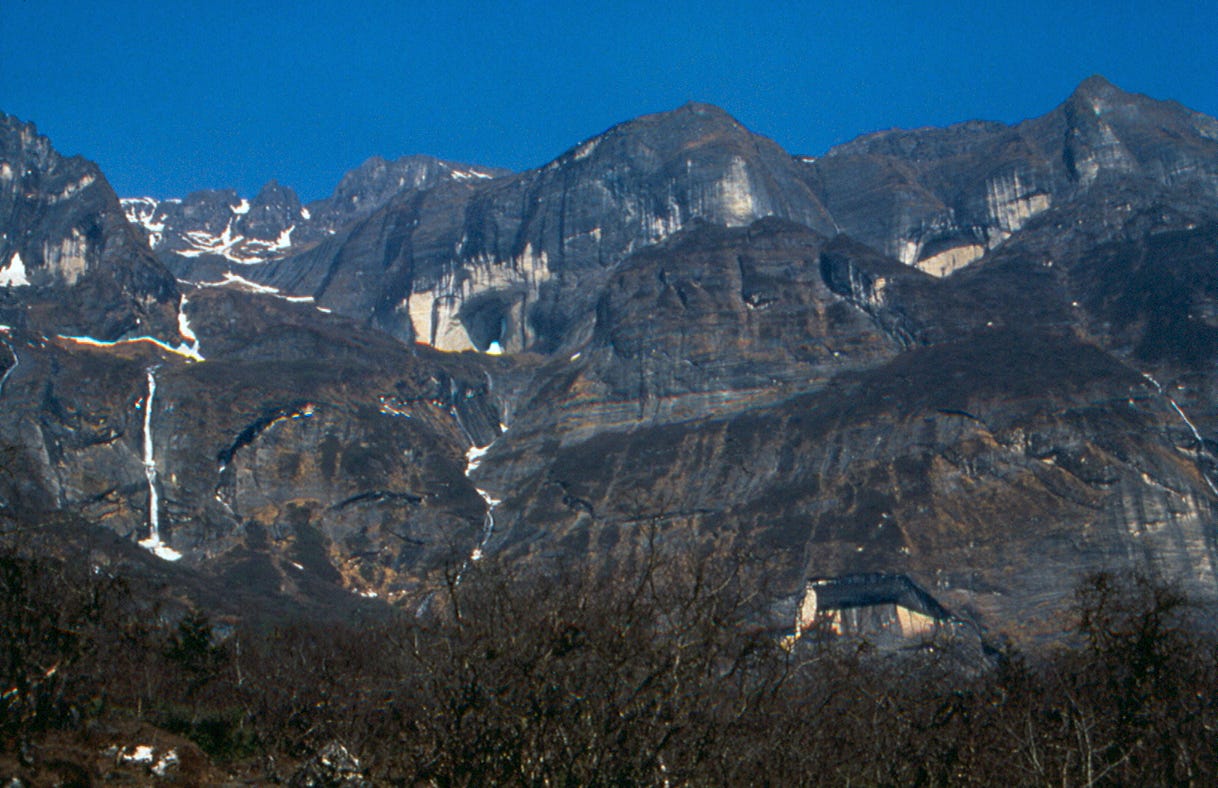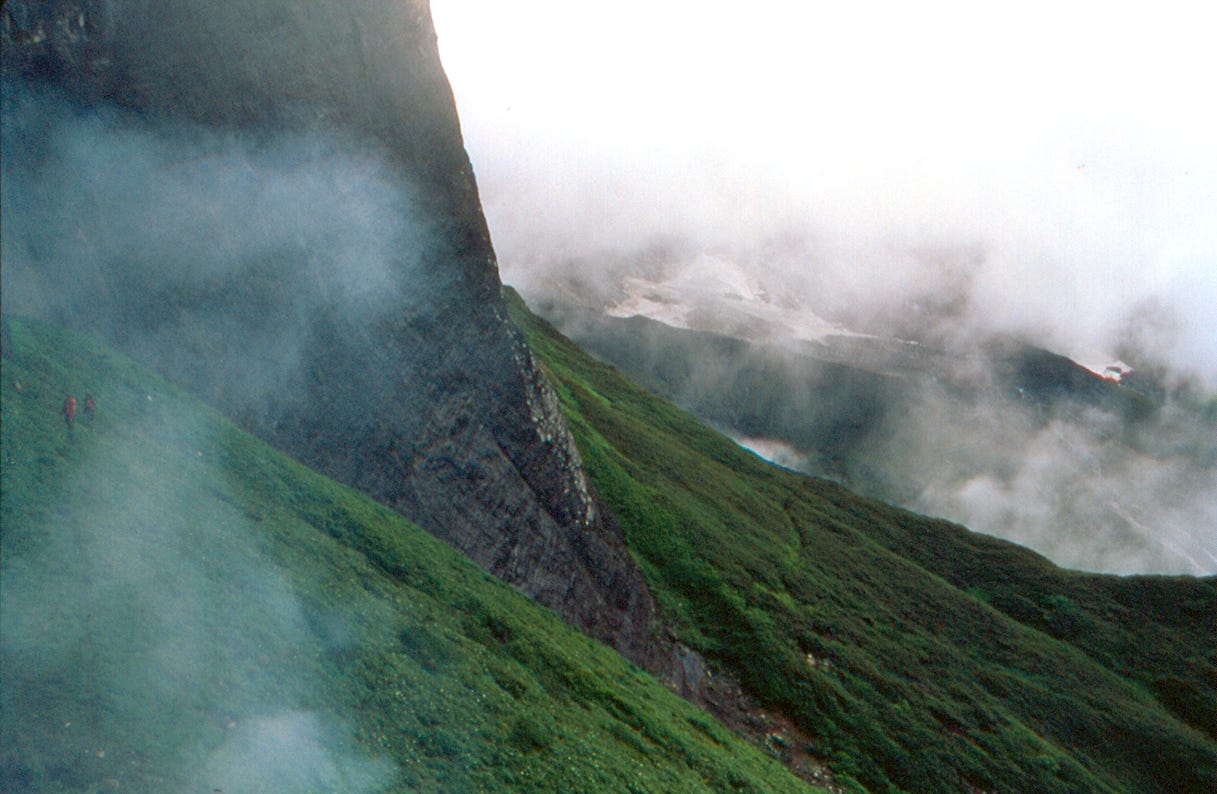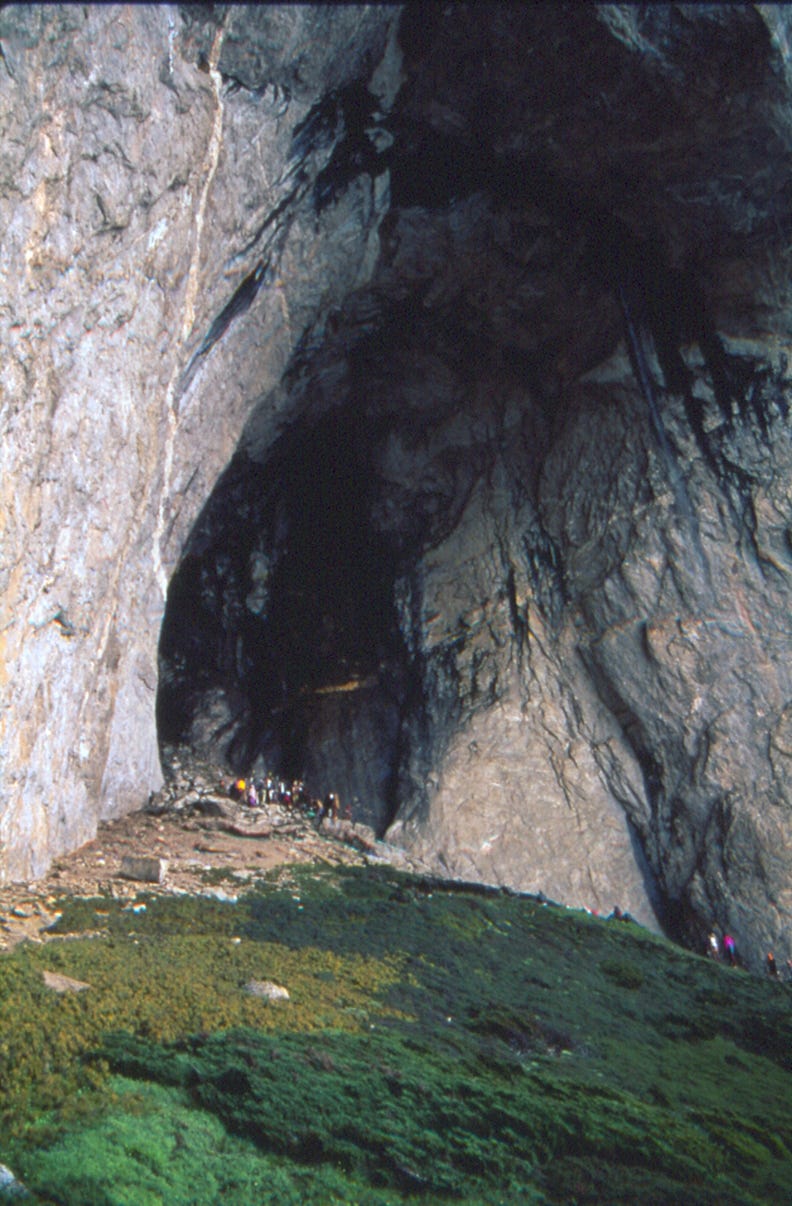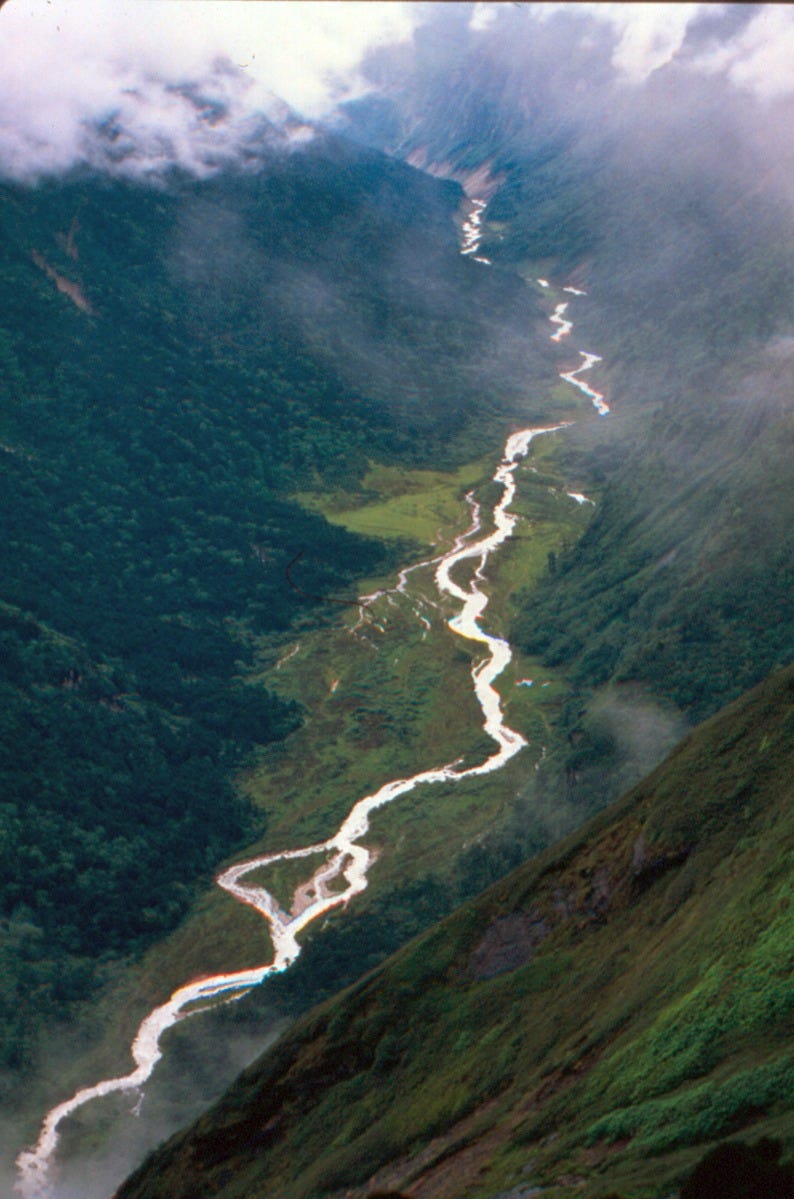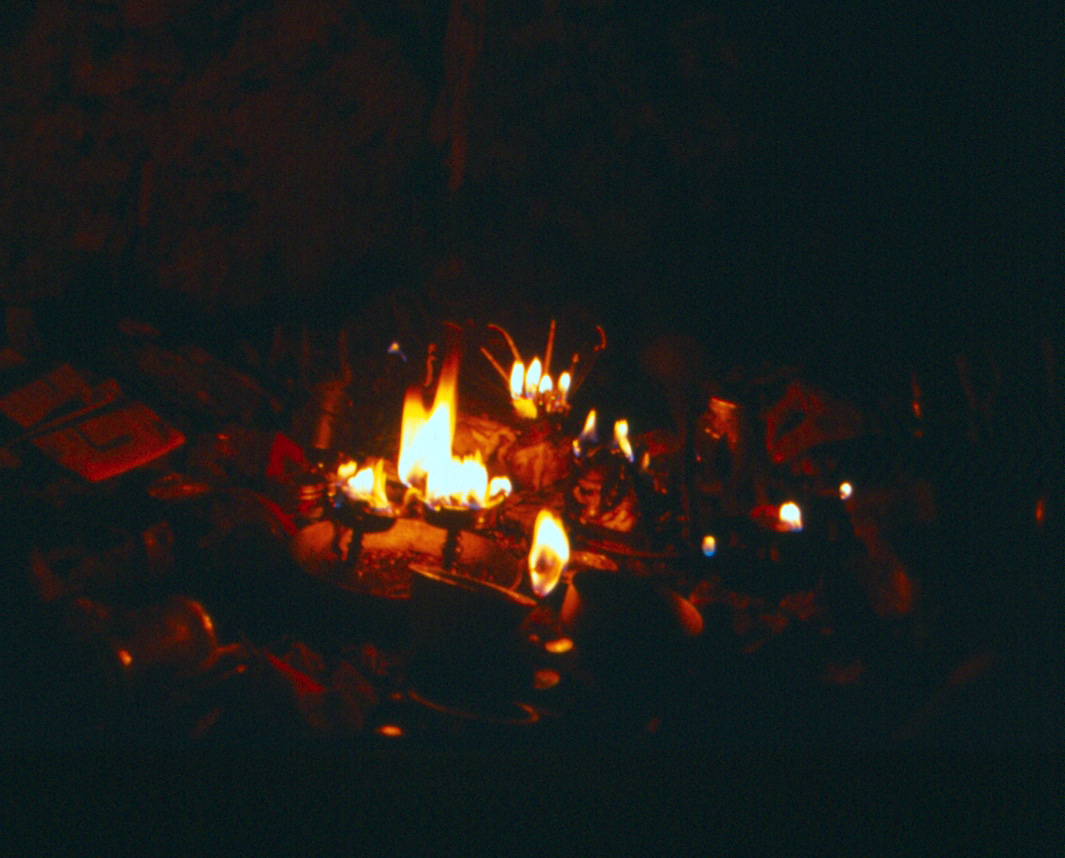I wrote this many years ago while living in northeastern Nepal conducting research for a doctorate in Anthropology. In preparing for an interview this week, I realized that what I experienced on this pilgrimage about the sacred and what it takes to be in its presence informs all of my work with plants and the herbal products industry. The essay is hidden in my book, Thin Places: A Pilgrimage Home (30% discount with CUP30) so I thought I would share it here.
August 1992
My skin was like wet tissue paper. It peeled off with my socks, pulled off under the damp bandage. It came off from between my toes, from the soles of my feet, and from the edges of my heels. The exposed new skin was raw and tender. There was too much of it to cover and nothing solid or dry to hold down a new bandage. I had never seen anything like it and had no idea what to do. I glanced up with despair and saw the women already lifting their bamboo baskets and filing barefoot into the early morning mist. Pain was preferable to abandonment. Wincing, I pulled on my last dry pair of socks and laced up my soggy boots. I stuffed my jacket into the top of my pack and followed in the direction of the women – day number two on our pilgrimage to Khembalung.
Khembalung refers to several places. It is Makalu, the fifth highest mountain in the world and the home, so the villagers in Hedangna say, of Lord Shiva. At night in their dreams, Yamphu shamans and priests say, they travel to a cold, clear lake on the right shoulder of the mountain. Witches travel to the ridge as well, but they bathe instead in a lake of blood. When they are done washing, the shamans and witches and priests stretch out on the rocks, drying themselves in the moonlight and arguing over who is the most powerful.
Khembalung is also a bhayul or hidden valley of Tibetan cosmology, a pure enchanted land set outside the destruction and corruption of time. Here, so the legends say, one will find refuge from the enemies of religion and attain eternal youth, beauty, strength and fertility.
These bhayuls are physical places hidden deep in the Himalayas and rendered inaccessible by the magic of the Tibetan yogi, Devimayasambhava. What pilgrims see on their journey to these sacred places depends on what they are capable of seeing. Some encounter rocks and trees, mountains covered with snow. Others who cross the same terrain see mysterious landscapes shimmering with jewels and awesome mountains floating above clouds of light.
What they experience when they arrive in the valley of Khembalung also depends on what they are ready to experience. Most find a peaceful and fertile land with room for five hundred people to settle. They receive a blessing of good health, long life, fertility, and strength; their desires will be fulfilled. Yogis who enter the same lush valley have sudden visions of the nature of realty, flashes of insight that are fleeting, but that strengthen and deepen their spiritual journeys.
Entrance to the innermost realm of Khembalung is reserved for those who have reached the highest level of spiritual fulfillment. Here the physical landscape corresponds to the body and mind of the pilgrim. When travelers enter this place – a place, so the guidebooks say, where there is no distinction between life and death - they acquire the clarity of mind and openness of heart needed to attain enlightenment.
Few attempt to undertake journeys to these hidden lands. It is too dangerous, and they fear they will never return. But many make pilgrimages to the places believed to be ‘gateways’ to these valleys. Two caves carved out of a granite cliff 1,000 feet above the high-altitude summer pastures of Yangle Meadow, a day’s walk south of the base of Makalu, are said to be entrances into the hidden valley of Khembalung. Whether they are or not, these caves are believed to be sacred places where gods have stayed and are among the most important pilgrimage sites for Hindus and Buddhists in the upper Arun valley.
Priests and shamans, lamas and yogis are able to make the journey to Khembalung in their dreams or through intense spiritual practice, but everyone else must get there on foot. And so at the height of the monsoon, I set out at dawn with twenty-five villagers from Hedangna on the annual pilgrimage to the Khembalung caves at the time of the full moon.
The Yamphu with whom I traveled know that the caves are connected to the hidden valleys of Tibetan cosmology, but they described themselves as Hindu and referred to the site as Shiva’s cave. Two Brahmans from a less remote village to the south joined us. These men were tall and thin and not at all suited to the long, hard days of walking. One of them complained incessantly, saying the trail was too hard and the trip too difficult. Each time the Brahman complained, Jadu Prasad, one of the oldest Yamphu men in the group who was on his sixth pilgrimage to Khembalung, replied matter-of-factly, “It wouldn’t be a pilgrimage if it wasn’t difficult.” By the end of the trip we were all repeating, sometimes with laughter, sometimes without, “It wouldn’t be a pilgrimage if it wasn’t difficult.”
While yogis and lamas travel to hidden valleys to escape samsara (cycle of death and rebirth) and attain eternal bliss, the pilgrims with whom I traveled had more modest goals. The men and women were going to Khembalung to ask for a son, a daughter, a job, a good harvest. I hoped to learn more about their pilgrimages, about what they did and why. But, like the others, I soon began to talk less as we walked. Like them, I found myself mumbling repetitive chants, over and over, to keep myself moving across the rocky terrain.
I carried a down sleeping bag, a Thermarest, a toothbrush, a pack cover, a flashlight, a notebook, iodine, four pairs of socks, long underwear, a Synchilla jacket, a camera,and rice. My boots were soggy, my socks were soggy, and the wet, soft skin on my feet continued to peel. There was nothing I could do, so I simply ignored the pain as best I could. Every time I unpacked and repacked, the women gathered around to comment on each item I had brought. Each of them carried a hand-woven woolen blanket, a bamboo mat to keep out the rain, rice, some spices, and a pot. All were barefoot. They had bundles of string and bits of cloth, shawls, their finest clothing to wear on the day we climbed to the caves, and raksi, a type of spirit made from millet. That was all.
Each morning we awoke in the dark. We walked all day along steep narrow trails, fording icy streams that overflowed from the monsoon rains, and climbing from 5,000 feet in Hedangna over two 16,000 foot passes and up the Barun valley. In five days, we covered the same distance that I had traveled in two weeks the previous spring while trekking with my family.
We stopped only at dusk, when we had reached a cave large enough to hold all twenty-five of us. We ate one meal a day, f rice mixed with wild plants gathered along the trail. While hiking we snacked on roasted corn flour. Occasionally, we drank black tea.
On the third afternoon, we arrived at Yangle Meadow, the grazing pastures below the Khembalung caves. We sat on the grassy floor of the narrow valley, at 13,000 feet, flanked by towering granite cliffs. Our words were swallowed by the roar of the Barun river, which carves through the center of the valley. Jadu Prasad pointed out an invisible trail going straight up the vertical rock face: the path to the caves. I sat silently. A chill that had been with me the entire trip slowly crept up from my stomach. The two oldest women in the group, both in their seventies, looked at the cliff and then looked at me. “Don’t go,” they said. “Don’t do it; the trail is too hard. Stay below and wait.”
I know how to rock climb, I know what to be afraid of, and I shared their concern. “If these grandmothers can do it, of course you can,” Jadu Prasad said. Having spent much of the past year trying to keep up with these same grandmothers while collecting firewood and stinging nettles in the jungles around Hedangna, I was not so sure. But the men promised that we would all go together and that they would look out for me. If I could go with them, I agreed, I would give it a try. We lifted our loads and went in search of a dry cave in which to spend the night.
The next morning we awoke in the dark. It was drizzling. It had rained all night, and I had slept fitfully, dreaming of slippery mud and slippery rocks. I found Jadu Prasad and asked again if he thought I could make it. Again he reassured me, so I joined the women to bathe. The women were used to doing things on their own; they were strong, and they assumed that I was equally strong. I could not count on them for help on the trail. They seemed to be taking their time bathing, and so, after a perfunctory bath in the icy water, I returned to the cave, which was empty. I waited, thinking that the men must have gone to bathe as well.
Finally, one man returned. He was surprised to see me and said that the men had left and that he had come back to get something he had forgotten. I grabbed my bag and scrambled after him. We walked silently and rapidly through the drizzle, turning off the main trail onto a narrow overgrown path that climbed toward the cliff. We caught up with Jadu Prasad and the two Brahmans. They greeted us as we approached and told me that the trail was too slippery for my boots and that I should walk barefoot; they then returned to their discussion of whether the two menstruating women in the group should climb to the sacred caves. I was curious to hear what they had to say, but was distracted by the trail and, now, by my bare feet. I had always imagined the pain that comes with walking barefoot over rocks and roots. Until now, I had never thought of the cold. The soles of my feet were numb, so numb that I did not feel the stones underneath.
Soon the trail disappeared into the base of the rock. Those ahead had been slowed by the climb, and the women coming from behind caught up with us. Hands gripping the rock, we slowly followed the others up the cliff. Along with our group of twenty-five from Hedangna, there were Bhotiyas (Buddhists) from the northern Arun valley and Chetris (Hindus) from the south. Together, sixty or more people were making their way up the rock face.
In the West, we climb rocks with rope and protection. We wear soft rubber under our feet. We are on the rock, but not on the rock. With these pilgrims I climbed to the Khembalung caves barefoot, with no rope. Perched on a tiny ledge, Jadu Prasad reached down to pull me over difficult sections. I clutched his hand as he hauled me up the cliff, not letting myself think about what he, in turn, was holding on to. At a particularly rough patch, one of the grandmothers looked at me with concern and suggested that I go down. But then a man appeared with a twelve-foot piece of rope. He knelt above the difficult section and held the rope as I used it to climb up the crack.
Once, at a Quaker wedding I attended, the father of the groom talked about thin places, places where one’s nerve endings are bare. People make pilgrimages to thin places, places where gods have made their mark on the land. As the legends of the hidden valleys make clear, these journeys are internal as much as external. What the pilgrims encounter – the blessings they perceive – depends as much on their receptivity as on the sanctity of the land they pass through.
Two hours after leaving the valley floor, the trail leveled and we began to climb the final section through thick clumps of juniper. Spiky roots and sharp stones under the juniper bushes reminded me of my bare feet, by now accustomed to the cold. While climbing, we had been able to see only the rock rising immediately ahead and the valley receding below. As we came over the last incline, the most sacred site in the upper Arun Valley – the Khembalung caves – suddenly loomed before us: an immense amphitheater carved out of the cliff by a torrent of water pouring from an opening at the top of an enormous cave. Buddhists say that Padmasambhava meditated here on his way to Tibet. Hindus say htat Shiva bathed here the evening before his wedding to Parvati. Now, snatches of the high-pitched chants of the Chetri pilgrims drifted down from the base of the amphitheater.
We approached the cave from below, first stopping at a cairn where we hung narrow pieces of colored cotton cloth. Then, in single-file, we walked through the waterfall. Those before me stood directly under the cascade and drenched themselves in the freezing water. It was still drizzling and cold. Already chilled, I skirted the edges of the waterfall, hoping that no one would notice, and followed the others up the last rocky stretch and into the cave.
The air inside was cold and dry and laced with the sweet smell of burning juniper. Red and green, blue and yellow prayer flags brought by the Bhotiyas and attached to long sticks rose out of a pile of stones in the center of the cave. Smaller bits of cloth had been tied to sticks or rocks. Candles, clumps of wildflowers, red tika powder, coins, even a watch were placed haphazardly on the pile of stones beneath the prayer flags.
Until now, we had been quiet, focused on the trail and the destination. Once we were in the amphitheater, the atmosphere changed. There was work to be done. Two women pulled out clumps of string that they coiled into bundles, dipped in ghee, and lit as candles. One couple carefully placed a small tin trident below the prayer flags. A young man who had come on the pilgrimage to assist his mother, sat off to the side, staring at the opening in the ceiling of the cave through which water flowed. There was no way people could make that hole, he told me. Only a god could have done so, which is why we had to give offerings. A middle-aged man who had moved to Hedangna from southern Nepal paused in his preparations to scan over the amphitheater. He had heard about this place since he was young, he told me. “Now that we are finally here,” he said, “we have to take our time and make sure we do things right.”
The time spent in the cave was not what I think of as spiritual. There were too many people, too much commotion, too much concern about this piece of string and that piece of cloth. I was too preoccupied with how we were going to climb down the cliff. Still, the cave was awesome. Now, the voices and din echoed off the high ceiling of the cave, but I imagined being here alone, with only the sound of the wind and the torrent of water spraying against the rock. The ground dropped steeply, and all I could see was the Barun River, silver and silent, winding its way through the green meadows far below.
We left Shiva’s cave, walked down a narrow path through the juniper, and continued around the ridge to a smaller cave set in the rock face. Both caves are considered part of the sacred site known as the Khembalung caves by Hindus and Buddhists alike. For Hindus, this is the cave in which Parvati lived and is said to have bathed in the water falling from the rock above. For Buddhists, this is the cave in which Yeshe Tsogyel, Padmasambhava’s consort, is said to have stayed on their way from India to Tibet. We took turns crawling into a space that would hold only there or four at a time. Flickering light from string candles dipped in ghee and set on the floor illuminated exposed chunks of crystals along the inside of the cave and the air was pungent from the burning butter. The rest of the cave was in shadow. Several red plastic bangles and a white cotton shirt sewn by a tailor in Hedangna had been placed amidt the usual bits of cloth and coins: offerings brought by a couple seeking a child.
Outside, more juniper was burned. One of the Brahmans chanted prayers for the well-being of our group, we tossed bits of uncooked rice into the smoke, and the Brahman wiped ashes on our foreheads as a tika (blessing). We then began the descent, taking a path that was not nearly as steep as that we had ascended. I paused to pull on my boots and followed the others to the cave in which we had slept the previous night. The menstruating women who had been prohibited, by tradition, from visiting the sacred sat by a smoldering, smoky fire. They added some wood to the coals to heat water for tea and we snacked on roasted corn flour mixed with sugar. The two oldest women said they were too tired to continue up the valley and that they would wait for us there. We packed our loads and set out once again.
The floor of the Barun Valley was brilliant green from the summer rains and there was finally a bit of blue sky. The air on my bare feet that morning had dried the skin, and the raw parts felt less painful. With the climb to the caves over, I felt carefree for the first time in days. As we walked up the valley, one man speculated that the weather had turned because of the particularly strong dharma (spiritual practice) of someone in our group. The idea that sun and rain responded to our thoughts and actions reassured me and helped me feel less alone in the vast landscape. We walked until early evening, stopping at a huge open cave at 15,000 feet to spend the night. The next morning, we hiked a few hours to bathe in the headwaters of the Barun at the base of Makalu on the morning of the full moon.
**
Another long day walking in misty rain, another night spent sleeping in yet another cave. There had been confusion over a bag I had left with the grandmothers, whom we now discovered, had decided to head home before us. One of the women reprimanded me for not taking responsibility for my belongings. A man who had told me the previous day to leave the extra weight, looked at me with disdain and said that he had told me he would carry the bag. I turned away and walked to the river’s edge to fill my water bottle. It was dusk, and the sky still was overcast. I stood on the banks of the Barun river, alone. I thought about how hard I was trying to get it right – to walk fast enough, to say the right thing, to understand the right way. In Hedangna, I had novels to read and a tiny room with a door that I could shut, a door that, oddly enough, protected me from this stark realization of my solitude. For the past few days, these barriers had been stripped away, and this sudden and complete exposure made me acutely aware of the gap between my world and that of my companions.
I stared at the cold, gray rapids thundering through the cold, gray fog. Why was I here, alone, in the middle of nowhere? Why did I keep going out on my own into the wind and the rain and the wet? I inhaled the cold, moist air and searched the shadows beneath the Khembalung caves, searched the thick fir trees clinging to the edge of the valley floor. The mist moved swiftly and silently along the banks of the Barun. The silty river roared. Then the clouds suddenly opened, and a shaft of light broke through the fog, turning the gray water o silver, the black fir to deep green. An angular cliff appeared out of the clouds high overhead, the red-gray granite, softened by the yellow evening light, was framed by heavy dark clouds. Just as suddenly, the fog closed over and night set in.
I took a deep breath, turned, and walked back to help prepare dinner. In the cave, a younger woman approached me to say that, unlike me, they were with their families and neighbors, for them it was as if they had never left home. They forgot it was different for me, and she realized that sometimes I must feel lonely or homesick, and hoped I was okay.
During the trip, I felt an ache in my chest, a longing that would not go away. I thought there must be a place, somewhere, where I could be held, here, on the inside. As soon as I arrived at that place, I was sure, the yearning would disappear. Now, I realized that the longing would never go away. It was what had brought me here, to one of the thinnest places I had ever encountered. It was what let me know I was on the right path, what kept me walking even as the skin peeled off my feet. It was what let me experience the sacred.
Several months earlier, I had been sitting on the banks of the milky green Arun River to witness a cremation. As we watched the burned body float down the river, the mother of the dead man held up her hand in front of my face. It was cracked and dark. “We all feel love,” she told me. “We all feel pain. We all bleed when we are cut. It is only the mindhum (oral traditions) that is different.”
The skin contains the blood, creating the distinctions that enable us to live. But it can become too thick, letting us forget the blood pulsing underneath and keeping us from sensing what Roberto Calasso calls the “connection of everything with everything else, which alone gives meaning to life” (1993:284).
We experience the sacred not simply by visiting places that are sacred. We enter the sacred when we let go of the fear of being exposed and begin to open our hearts to the world around us. Only when I gave up trying to hide what was inside did the boundaries between the other pilgrims and me begin to dissolve. And in the moments I felt most alone, I realized that I was never alone. “Longing begets belonging,” writes Mary O’Kane (2000). The sacred, as Calasso writes, is always there “waiting to wake us and be seen by us, like a tree waiting to greet our newly opened eyes” (1993:280. It is simply up to us to let ourselves see.
* *
Having reached our destination, everyone was suddenly in a hurry to begin the trip home. Rice fields had to be weeded, millet had to be planted, and houses had to be looked after. We left early the following morning; walked for twelve hours, over a 5,000-foot scree pass; and then descended steeply past grazing yaks and shepherds’ huts. We walked on after dark for an hour searching for a place to spend the night. Finally, ten of us crowded into a small, empty bamboo hut. I was the only one with a sleeping mat, so I kicked away the cow and goat dung, spread out the mat on the dank floor of the attached livestock shelter, and tried to sleep. We again woke before dawn and walked hard and fast until we reached another shepherd’s hut where we stopped to drink sour buttermilk. Since climbing to the caves, I had given up bandaging or even looking at my feet, but by this time, I was no longer the only one limping. The women leaned heavily on walking sticks and groaned with each step. We joked and laughed to keep our minds off the pain.
The trail descended steeply. Yaks gave way to water buffalo and cows, and we began to meet shepherds from Hedangna. Finally, we could see the village, far down the ridge. We had been rushing and rushing, and now the women wanted to linger, to hold onto the remaining bits of time that were outside regular, routine time. We paused on top of the ridge to eat the last of our corn flour. One woman sighed and said that she was so happy up here, in the meadows and the mountains, that she did not want to go home. Two women separated the tiny wildflowers they had collected from the fields beyond Yangle Meadow to give to friends who had had to stay home. Two others divided a bottle of water, taken from the headwaters of the Barun. The sun was beginning to set.
We began to walk the last stretch, down and down. We came across leeches for the first time but were too tired to pull them off. An hour later we entered the edges of the village, in the dark. I was the only one with a flashlight, but the batteries were weak, so our pace slowed to a crawl in the dim glow. The trail wound beneath thick clumps of bamboo towering over the stone and mud houses. People broke off from the group as we passed the narrow paths to their homes. Eventually, it was only the two grandmothers and me, walking down to the houses at the bottom of the village. We finally arrived. I dropped my pack and leaned it against the stone wall of Ganesh and Jaisita’s home. Someone went inside to cook rice. The children gathered around while I sat on the mud porch to unlace my boots. My socks were wet with blood. I carefully peeled them off, so the air could begin the slow process of healing – and thickening – the exposed raw skin.

